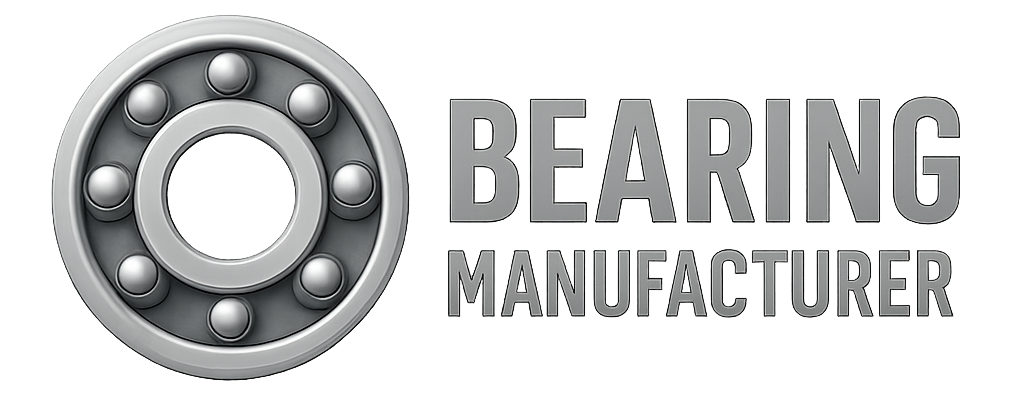Spherical bearings are a type of plain bearing designed to support angular movement between two connected components. Also referred to as spherical plain bearings, they provide flexible articulation, making them highly effective in applications with oscillating or pivoting motion and where shaft misalignment may occur.
Table of Contents
ToggleUnderstanding Spherical Bearings
Design and Components
-
Inner Ring: Mounted onto a shaft, featuring a spherically convex outer surface.
-
Outer Ring: Housed within a bore, with a matching concave spherical inner surface.
-
Sliding Contact: Operates through sliding motion between rings, without rolling elements like ball bearings or roller bearings.
.
Key Features
-
Self-aligning Functionality: Compensates for mounting inaccuracies and shaft misalignment.
-
Supports Angular Rotation: Enables oscillating and tilting movement.
-
Load Handling: Primarily designed for high radial loads, with moderate axial load capabilities.
-
Material Choices: Available in steel, bronze, or composite materials like PTFE for self-lubrication.
Types of Spherical Bearings
Based on application needs, spherical plain bearings are available in several configurations:
| Type | Description |
|---|---|
| Metal-on-metal | High strength and impact resistance; requires regular lubrication. |
| Composite material | PTFE-lined designs enable self-lubrication and maintenance-free operation. |
| Sealed versions | Protect against contaminants and retain lubrication in dirty or humid environments. |
Typical Applications of Spherical Bearings
Spherical bearings are ideal for mechanisms involving angular movement, such as:
-
Vehicle suspensions – Manage alignment shifts under variable load conditions.
-
Heavy-duty equipment – Provide articulation in mining, agricultural, and construction machinery.
-
Hydraulic cylinders – Serve as pivoting joints.
-
Linkages – Used in aerospace, marine systems, and industrial automation.
When selecting a spherical plain bearing, consider factors such as load direction and magnitude, angular range, lubrication method, environmental conditions, and expected lifespan.
What Are Spherical Roller Bearings?
Spherical roller bearings are rolling-element bearings built to accommodate angular misalignment while managing very high radial loads and moderate axial loads in both directions. These bearings feature two rows of barrel-shaped rollers arranged around a common spherical raceway in the outer ring.
Design Features of Spherical Roller Bearings
-
Dual-row roller design: Ensures high load capacity and stable rotation.
-
Angled inner ring raceways: Allow flexibility under shaft deflection.
-
Spherical outer ring: Enables the bearing to adjust under misalignment conditions.
Types of Spherical Roller Bearings
| Type | Characteristics |
|---|---|
| Open (non-sealed) | Operate at high speed and temperature with direct access for lubrication. |
| Sealed | Contain integral seals to retain lubricant and block contaminants. Ideal for dirty or corrosive environments. |
Choosing the Right Spherical Roller Bearing
The right bearing type depends on:
-
Load requirements
-
Speed and rotation frequency
-
Contamination exposure and sealing needs
-
Access to maintenance or lubrication
-
Open bearings: Best for applications where speed and thermal dissipation are critical and maintenance access is available.
-
Sealed bearings: Recommended for dusty, moist, or remote conditions where maintenance should be minimized.
Advantages of Spherical Roller Bearings
-
Smooth rotation with low friction
-
Excellent misalignment accommodation
-
High radial and axial load support
-
Moderate to high-speed capability
-
Sealed options reduce maintenance frequency
-
Extended bearing life
-
Minimized noise and vibration
Applications of Spherical Roller Bearings
These bearings are commonly used in demanding industrial systems, including:
-
Mining and construction equipment – High shock loads and vibration.
-
Textile machinery – Consistent precision and speed.
-
Off-road vehicles – Durable under extreme terrain.
-
Pumps and fans – Smooth rotational reliability.
-
Wind turbines and marine propulsion – Accommodate variable loads and shaft movement.
-
Gearboxes – Connect rotating shafts in complex mechanical assemblies.
Spherical Bearings vs. Spherical Roller Bearings
| Feature | Spherical Bearings (Plain) | Spherical Roller Bearings |
|---|---|---|
| Design | Inner and outer ring with spherical sliding surface | Inner and outer rings with rolling elements and spherical raceway |
| Rolling Elements | None | Barrel-shaped rollers |
| Motion Type | Sliding | Rolling |
| Load Capacity | High radial, moderate axial | Very high radial and axial |
| Misalignment Tolerance | Excellent | Good |
| Speed Suitability | Low speed | Moderate to high speed |
| Lubrication | May be self-lubricated or require grease | Requires lubrication |
| Sealing | Available with or without seals | Usually sealed |
| Typical Applications | Hydraulic cylinders, suspension, joints | Gearboxes, conveyors, fans, rotating shafts |
| Angular Movement | Pivoting or oscillating | Primarily rotational |
| Materials | Steel, bronze, PTFE-lined | Hardened steel, coated if necessary |
Final Thoughts
From the fundamentals of spherical bearings to the advanced capabilities of spherical roller bearings, understanding each type’s structural design and use case is key to ensuring your machinery runs efficiently, safely, and reliably.
At Bearing Maker, we provide a wide range of spherical bearing solutions, including custom manufacturing and engineering support. Our team can help you select the right bearing based on your operating environment, load requirements, and maintenance expectations.
Contact us today to find the ideal bearing configuration for your application.
